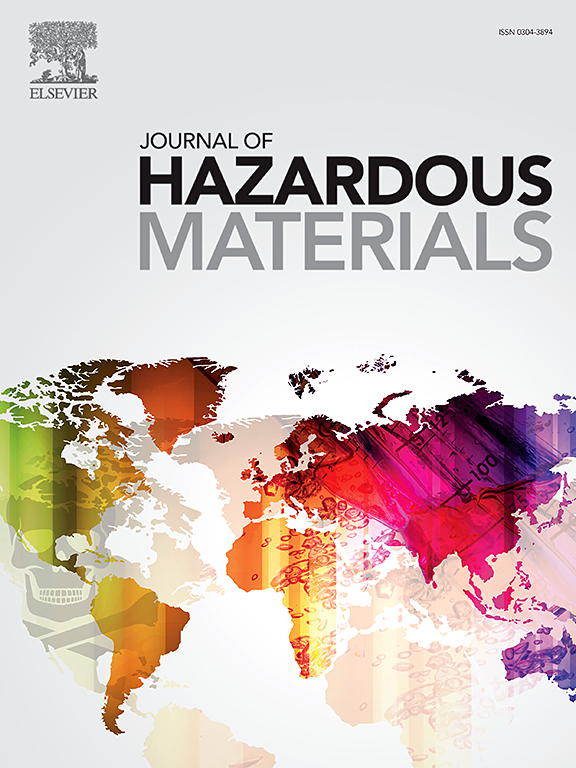Aqueous-phase room-temperature synthesis of 2D CuCo-BDC for superior peroxymonosulfate activation
IF 12.2
1区 环境科学与生态学
Q1 ENGINEERING, ENVIRONMENTAL
引用次数: 0
Abstract
Bimetallic metal-organic frameworks (BMOFs) have garnered significant attention in environmental remediation. However, their traditional synthesis often demands for high temperatures, pressures, and toxic solvents. Here, we develop a mild and environmentally friendly route in an aqueous phase at room temperature for synthesis of cobalt-doped Cu-BDC MOF (CuCo-BDC, where BDC = 1,4-benzenedicarboxylic acid), using water-soluble disodium salt of terephthalic acid as a linker. Our 2D CuCo-BDC BMOF was evaluated in degradation of naproxen via catalytic peroxymonosulfate (PMS) activation. The BMOF achieved a degradation rate approximately 300 times faster than that of Cu-BDC at a low PMS concentration, facilitated by a coupling effect of bimetal redox properties toward PMS activation. This remarkable performance arises from the 2D morphology with highly accessible active sites, mesoporosity with enhanced mass transport, and Cu-Co synergistic effects in PMS activation. This study presents a sustainable BMOF synthesis method and broadens the potential for efficient pollutant degradation, laying the groundwork for broader environmental applications.

二维CuCo-BDC的水相室温合成及高过氧单硫酸盐活化
双金属金属有机骨架(BMOFs)在环境修复中受到广泛关注。然而,它们的传统合成通常需要高温、高压和有毒溶剂。本研究以水溶性对苯二甲酸二钠盐为连接剂,在室温水相中制备了一种温和环保的钴掺杂Cu-BDC MOF (CuCo-BDC,其中BDC = 1,4-苯二甲酸)。我们的2D CuCo-BDC BMOF通过催化过氧单硫酸盐(PMS)活化降解萘普生进行了评估。在低PMS浓度下,bof的降解速度比Cu-BDC快约300倍,这是由于双金属氧化还原特性对PMS激活的耦合效应。这种卓越的性能源于具有高度可达活性位点的二维形态、具有增强质量传递的介孔以及PMS活化中的Cu-Co协同效应。本研究提出了一种可持续的BMOF合成方法,拓宽了高效降解污染物的潜力,为更广泛的环境应用奠定了基础。
本文章由计算机程序翻译,如有差异,请以英文原文为准。
求助全文
约1分钟内获得全文
求助全文
来源期刊

Journal of Hazardous Materials
工程技术-工程:环境
CiteScore
25.40
自引率
5.90%
发文量
3059
审稿时长
58 days
期刊介绍:
The Journal of Hazardous Materials serves as a global platform for promoting cutting-edge research in the field of Environmental Science and Engineering. Our publication features a wide range of articles, including full-length research papers, review articles, and perspectives, with the aim of enhancing our understanding of the dangers and risks associated with various materials concerning public health and the environment. It is important to note that the term "environmental contaminants" refers specifically to substances that pose hazardous effects through contamination, while excluding those that do not have such impacts on the environment or human health. Moreover, we emphasize the distinction between wastes and hazardous materials in order to provide further clarity on the scope of the journal. We have a keen interest in exploring specific compounds and microbial agents that have adverse effects on the environment.
 求助内容:
求助内容: 应助结果提醒方式:
应助结果提醒方式:


